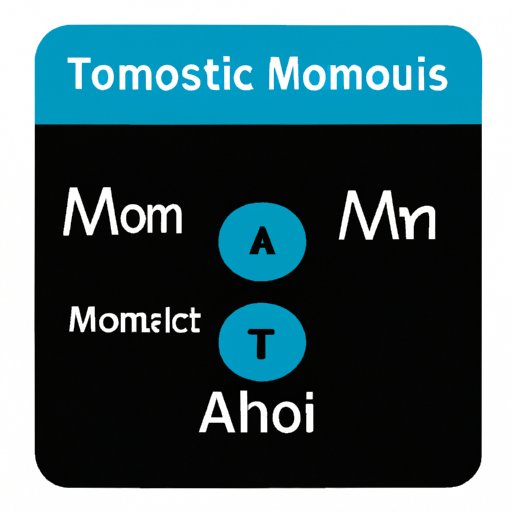
Introduction to Calculating Atomic Weight
Understanding atomic weight is an essential aspect of chemistry, physics, and other fields. Atomic weight calculations help us determine the weight of atoms and molecules, leading to a better understanding of chemical reactions and chemical properties. In this article, we will cover everything you need to know about calculating atomic weight, including its definition, components, calculations, and real-world applications.
Understanding Atomic Weight: Definitions, Concepts, and Calculations
Atomic weight is the weighted average of the masses of all the isotopes of a particular element, expressed in atomic mass units (amu). Isotopes are atoms with the same number of protons but different numbers of neutrons. They have the same atomic number but different atomic masses.
For example, carbon has three isotopes: carbon-12, carbon-13, and carbon-14. Carbon-12 is the most abundant isotope, accounting for 98.9% of all carbon atoms. Carbon-13 and carbon-14 are less abundant, occurring at 1.1% and traces, respectively. Each isotope has a different atomic mass, and these masses are used to calculate the atomic weight of carbon.
Atomic weight is used to calculate molar mass, which is the mass of one mole of a substance. Molar mass is used in chemical reactions to determine how much of a substance is needed to react with another substance.
A Beginner’s Guide to Calculating Atomic Weight: Step-by-Step Instructions and Examples
The following is a step-by-step guide for calculating atomic weight:
- Determine the atomic mass of each isotope of the element.
- Determine the percent abundance of each isotope.
- Multiply the atomic mass of each isotope by its percent abundance (as a decimal).
- Add the products from step 3 to get the atomic weight.
Let’s use carbon as an example:
- Carbon-12 has an atomic mass of 12 amu.
- Carbon-13 has an atomic mass of 13.003 amu and an abundance of 1.1%. Carbon-14 has an atomic mass of 14.0037 amu and an abundance of traces.
- 12 x 0.989 + 13.003 x 0.011 = 12.011 amu
- The atomic weight of carbon is 12.011 amu.
Readers can use this formula to calculate the atomic weight of any element.
Atomic Weight Calculation Made Simple: Using Formulas, Equations, and Tables
There are several tools and resources available for calculating atomic weight. One of the most useful is the periodic table, which displays the atomic weights of all known elements. Atomic weights on the periodic table are often shown as a decimal, reflecting the atomic weight calculation for that element.
The formula for calculating atomic weight is:
Atomic weight = (isotope mass 1 x % abundance 1) + (isotope mass 2 x % abundance 2) + …
The equation for calculating the percent abundance of an isotope is:
% abundance = (number of atoms of isotope / total number of atoms) x 100%
Readers can use these formulas to calculate atomic weight and percent abundance for any isotope.
Mastering Atomic Weight Calculations the Easy Way: Tips and Tricks for Chemistry Students
Calculating atomic weight can be challenging. Here are some tips for simplifying the process:
- Use a calculator to avoid errors.
- Round your answers to significant figures to simplify calculations.
- Memorize the atomic masses of common elements.
It’s important to avoid common mistakes when calculating atomic weight:
- Forgetting to convert percent abundance to a decimal.
- Forgetting to multiply isotope mass by percent abundance.
- Not using significant figures correctly.
Students can master the concepts and calculations of atomic weight by practicing calculations and working through chemistry problems.
Solving Atomic Weight Problems: Real-World Applications and Problem-Solving Strategies
Atomic weight calculations have many real-world applications, such as:
- Determining the amount of a substance needed for a chemical reaction.
- Calculating the density of a substance.
- Determining the isotopic composition of a sample.
To solve complex atomic weight problems, readers should follow these problem-solving strategies:
- Identify the known values and units for each isotope.
- Determine the percent abundances and atomic masses for each isotope.
- Convert percent abundances to decimals.
- Multiply atomic masses by percent abundances and add the results.
The Complete Guide to Atomic Weight Calculation: Everything You Need to Know and More
In this article, we covered everything readers need to know about calculating atomic weight. From definitions and concepts to step-by-step instructions and real-world applications, this guide provides a comprehensive overview of atomic weight calculations.
Readers can use resources like the periodic table and formulas for atomic weight and percent abundance to make calculations easier. By mastering the concepts and calculations of atomic weight, students can better understand chemical reactions and properties.




